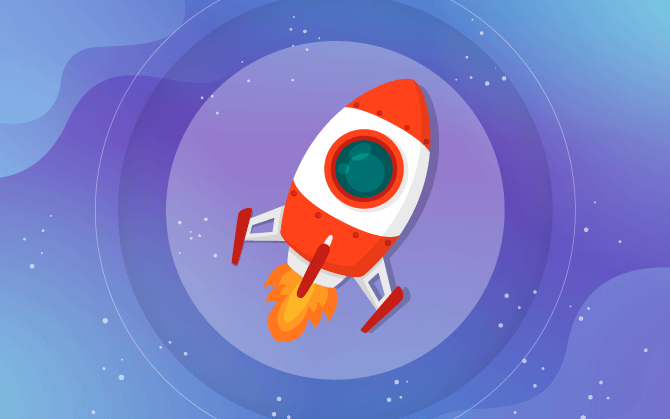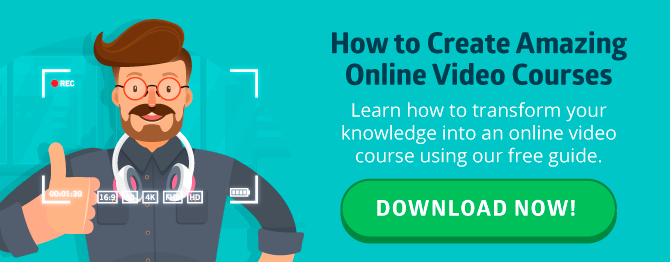
Learn how to include the Hero’s journey in your strategy to create captivating content
Using the hero’s journey in your marketing strategy is the key to winning over more customers.

What will we see in this post
The hero’s journey is a narrative model used in storytelling. It’s a great tool to bring readers closer to the brand’s story and create engaging content.
One of the factors that attract an audience when they come across a narrative of the hero’s journey is that they identify with the character and absorb the story as if it were analogous to their experiences.
Would you like to learn how to start telling your hero’s journey? Well then, let’s get started!
The hero’s journey, by Joseph Campbell
Joseph Campbell was a North American anthropologist and one of the greatest scholars on the hero’s journey. To Campbell, this term is a concept present in repeated myths.
The scholar on the subject, which he also calls Monomyth, published a book on the hero’s journey called “The Hero with a Thousand Faces “. According to the author, Monomyth has already been used in the great stories of humanity, such as the story of Jesus Christ, Buddha, Osiris, etc.
Campbell defended that the hero’s journey was a set of Jung archetypes, with the concept of Freud’s unconscious and the rites of passage of Arnold van Gennep.
The formula of the hero’s journey 12 steps
Overall, the hero’s journey is divided into 3 parts, which are:
- The departure
- The initiation
- The return
It’s important to note that there’s a common point that is emphasized in the tales narrated by the hero’s journey.
The stories’ characters go through an ordeal. At this moment, they need to demonstrate their courage and willingness to overcome the obstacles of their own fears in favor of a higher goal.
This goal might be defending the community, the family, revenge or a quest for justice. In the end, the heroes return with the rewards, the proof of overcoming an obstacle, victory or going through difficult personal ordeals.
The similarity between the stories is that, despite their differences, they repeat the same models, which are usually represented in three stages:
- The moment in which the hero starts his journey
- The course of the hero’s journeys, with the adventures and discoveries that emerge during the journey
- The return to the point of departure, with the acquired powers and knowledge.
Within this division, the hero’s journey goes through 12 stages. Check them out below:
1. Ordinary World
This is the environment where the hero lives, representing his story, origins and the context in which he is inserted.
2. Call to Adventure
In this stage, the challenge emerges and motivates the hero to leave his comfort zone and solve a problem.
3. Refusal
At first, the character naturally refuses or takes a while to accept the challenge, whether because he’s insecure or doesn’t feel capable enough.
4. Meeting with the Mentor
When the hero reaches this stage, they find a mentor, a wise person, a teacher, someone on whom they may deposit their faith, etc., which helps them feel motivated to accept the call.
5. Crossing the Threshold
The hero leaves the ordinary world and goes through the threshold that leads to another dimension, a special and magical place, where they will live adventures and make discoveries.
6. Tests, Allies, Enemies
The hero will go through challenges, problems, and tests, in addition to facing several doubts that will arise, besides having to face his enemies. On the other hand, they will also rely on allies and learn the rules of the new universe.
7. Approach to Inmost Cave
The hero is getting closer to his goal. They might still have to overcome challenges and face new obstacles.
8. Ordeal
This is the moment when the hero is faced with the biggest challenge in their adventure. It might be a moment that puts the lives of loved ones, or even their own, in peril – a separation, illness, etc. It’s the most dramatic moment in the story.
9. Reward
The hero manages to go through a difficult or traumatic ordeal, overcomes their fears and is rewarded for having accepted the challenge.
10. The Road Back
It’s time to return to the ordinary world. The hero goes back to the place from where they came.
11. Resurrection
In this stage, the character may find a new challenge, something that was unresolved during the story. This step has the purpose of rescuing the story’s drama and giving emotion to the ending.
12. The Return with Elixir
This is the moment when the hero comes back home, with a new life perspective based on the experiences they went through. They become a new person and have a lot to share with others.
In some stories, a formula is aimed at helping people, teachings are passed on and a moral of the story is shared. We have now reached the end of the narrative.
Examples of the hero’s journey in marketing campaigns
In the examples below, we’ll see how each brand has become the hero of their own story, going through each stage of the journey. Check it out!
Dove | Skin stories – Carmen
Dove wants to show that it’s much more than a bar of soap. Carmen talks about her scars and that imperfections should be embraced and every skin needs care.
The brand also shows building women’s self-esteem matters and that sharing women’s stories can help many others.
https://www.youtube.com/watch?v=ukZ2YKChsdQ
Pantene
The hero of this touching Pantene commercial is a deaf and mute girl who dreams of becoming a musician.
The commercial is bound to evoke an emotional response from pretty much every person and the takeaway is clear: there’s nothing wrong with being different and working hard can make you overcome barriers and achieve your dreams.
Always | #LikeAGirl
Puberty causes a lot of girls to feel insecure. Quite often they don’t believe they can achieve what they want, causing them to give up on their dreams and goals.
Always reversed the story for thousands of girls, by showing them they are capable of being protagonists of their own journeys and promoting self-confidence, so that they believe that nothing can stop them.
https://www.youtube.com/watch?time_continue=99&v=XjJQBjWYDTs&feature=emb_logo
So now that you know what the hero’s journey is and how to apply it to your marketing strategies, you need to learn about how to develop it with a top-notch script. Click here to find out how to write amazing video scripts!





